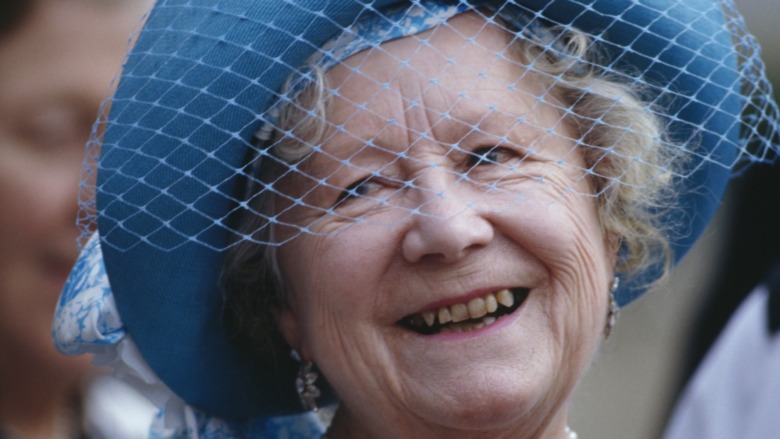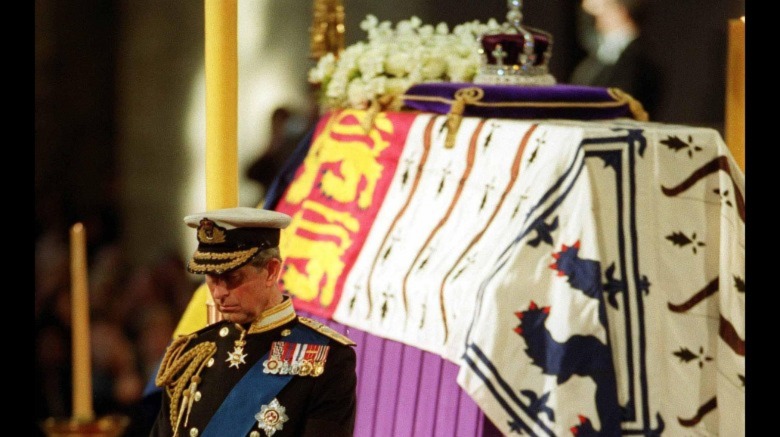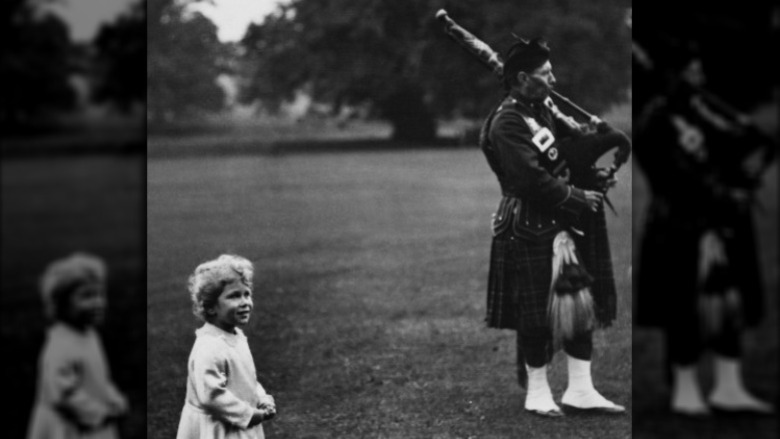The Truth About The Funeral Of Queen Elizabeth The Queen Mother
When Queen Elizabeth the Queen Mother (not to be confused with the reigning monarch, Queen Elizabeth II) died in March of 2002, her funeral was watched worldwide by more than 10 million people, according to The Independent. But like most large scale royal funerals, which are normally planned years before the person dies, every small detail was planned out in advance.
Like most royal funerals, the Queen Mother's service had a code name, Operation Tay Bridge, named for the River Tay in Scotland. The Independent additionally reports that the code names originally were intended to be used to keep the news of a royal's death quiet until an official announcement had been released. Similarly, plans for Queen Elizabeth II's future funeral is referred to as Operation London Bridge, and Prince Philip's is Operation Forth Bridge, reports The Guardian.
The plans for any royal state funeral are rehearsed on a regular basis so that when the time comes, staff are prepared to undertake such a large, solemn event. Royally Obsessed podcaster Rachel Bowie stated, "The funeral procession and ceremony had actually been regularly rehearsed for the past 22 years in preparation for Elizabeth, the Queen Mother's death (via The Independent)."
However, because Princess Diana died so suddenly, the Queen Mother's funeral plans, and the name Operation Tay Bridge, were usurped and used as the basis for Diana's ceremony, which the Queen Mother herself attended.
The involvement of the public is a key part of state funerals
Not only was the Queen Mother's funeral watched by people worldwide, but large crowds of mourners also came out to pay their respects. Consistently the most popular royal over the last 100 years, writes The Irish Times, she was viewed by the British people as almost a matriarch of the country and a symbol of strength during World War II (via The New York Times). Thousands of people placed bouquets in front of her royal residences, and hundreds more signed condolence books, notes The Washington Post (posted at the Kitsap Sun).
After the official 10 days of mourning for the entire country, the tenor bell tolled at Westminster Abbey, once for every one of her 101 years (via The Guardian), a countdown to the beginning of the service. Similarly, 41 gun salutes were fired for her, once a minute for 40 minutes, throughout the country, reports CNN.
Her coffin was actually moved several times from the time of her death to her funeral. After her death at Royal Lodge in Windsor, she was taken to the Royal Chapel of All Saints at Windsor Castle. From there, her coffin was taken to Westminster Hall in the Palace of Westminster, then from there on the day of the funeral to Westminster Abbey (as seen on YouTube). And, finally, she was laid to rest in St. George's Chapel in Windsor Castle, where she was interred along side her husband, King George VI, who she survived by 50 years (via Westminster Abbey).
Her personal love of bagpipes featured greatly
Bagpipes featured greatly in both her life and her funeral. Born Lady Elizabeth Bowes-Lyon, she grew up in Glamis Castle in Scotland and gained a great love of bagpipes (as can be seen in her expression in the photo above), so much so she later installed her own personal Royal Piper in 1953, according to Bagpipe Journey.
Queen Elizabeth's personal Royal Piper at the time, Pipe Major Jim Motherwell, played one of the Queen Mother's favorite laments, "The Dark Island" (posted on YouTube) as her coffin was moved from Windsor Castle, heading to the Queen Chapel at St. James' Palace in London, reports The Guardian.
From the Queen's Chapel, which The Guardian notes is next door to Clarence House, what had been the Queen Mother's London residence, over 196 pipers and drummers and over 1,700 troops accompanied her coffin to Westminster Abbey.
And in a show of his own love for the Queen Mother, notes CNN, a lone piper paying his respects played the haunting tune "The Flowers in the Forest" (also on YouTube) in tribute among the crowd of mourners on the parade route.


